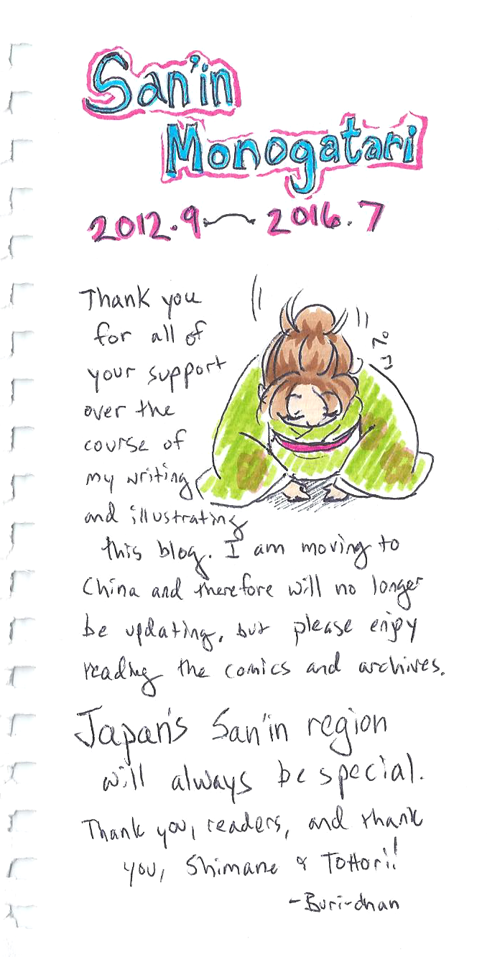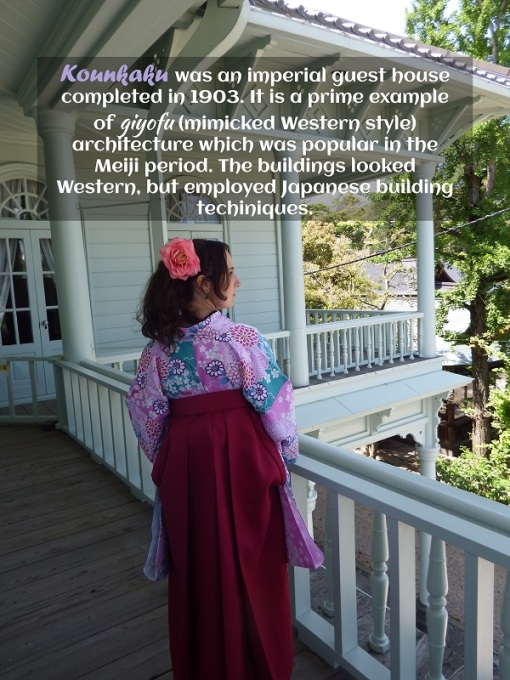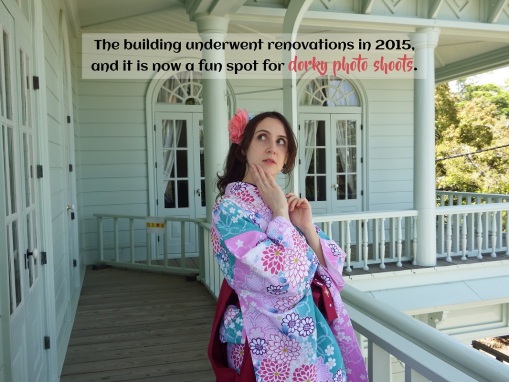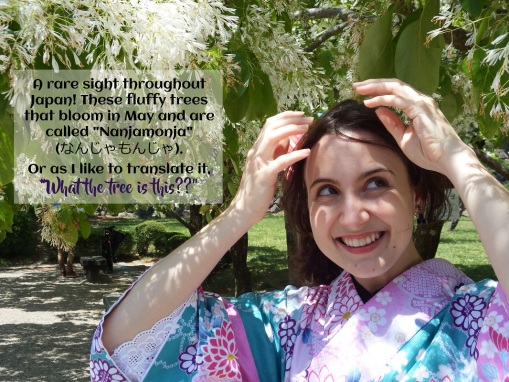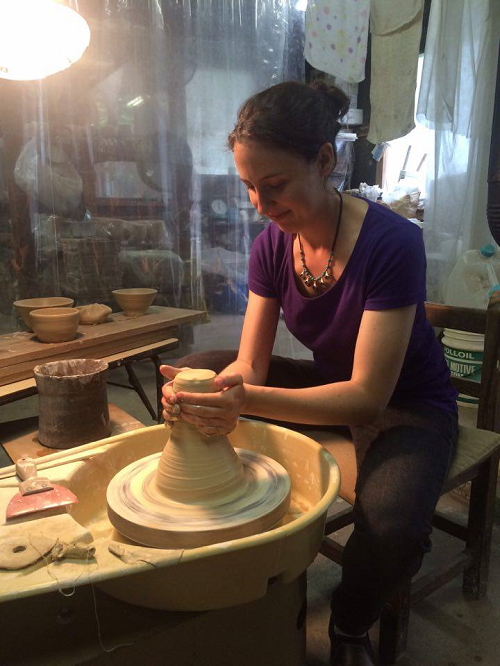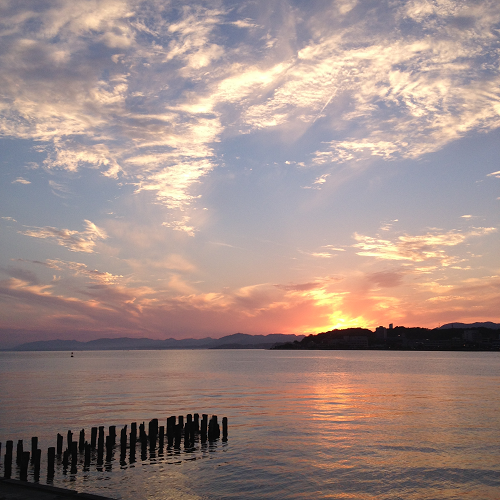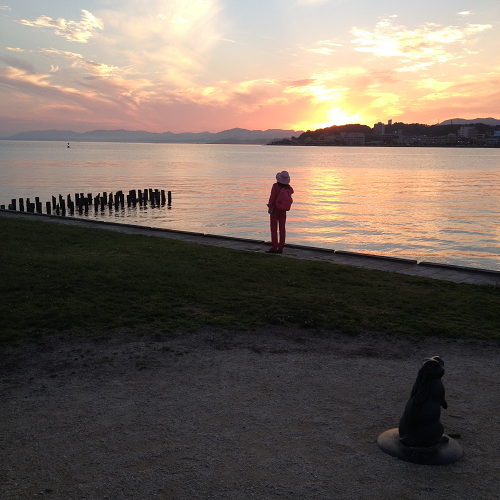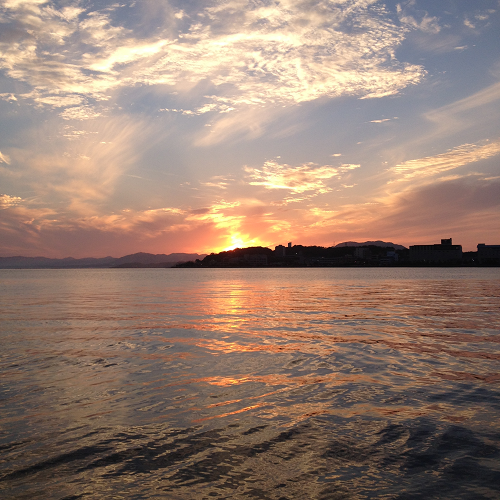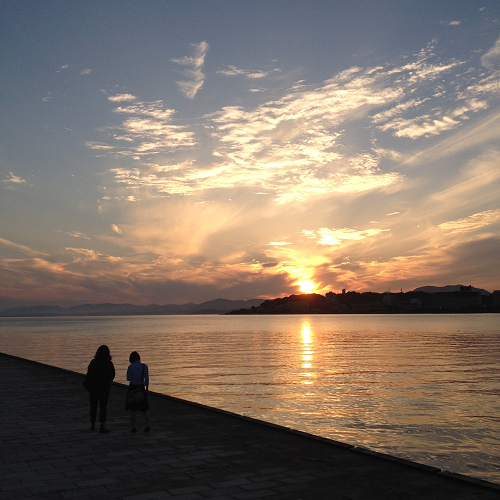The previous two entries focused on the autobiographical content of a letter supposedly written by Benkei himself. However, when asking most people about Benkei lore in the San’in region, most people will answer like this: “Yeah, he trained at Gakuenji Temple in modern day Izumo City. And he carried a giant bronze bell from Mt. Daisen all the way back to Gakuenji in one night.”

An illustration of one of the illustrious monks of Gakuenji’s history, along the route to the temple
That’s a fair distance to walk in one night even if you’re not carrying an enormous bell.

—————
Although I had always meant to go see the annual Benkei Festival at Gakuenji, something always kept me from seeing the costumed procession. Although I had always meant to go see the autumn leaf scenery it is famous for, I never did. At last, I had plans to at least visit the temple with Y-chan, but at 3am the night before, I found myself wondering if I shouldn’t bother. With everything going on in daily life getting ready to wrap up my JET contract and set out on a new adventure, I was too busy with all the exciting things going on during the day to be able to settle down and get any sleep at night. The loud thunderstorm certainly wasn’t helping.
Maybe we wouldn’t be able to see much at the temple anyway if the rain made things too slick? If it was anything like our Shugendo experience at Mt. Mitoku then it would probably be off limits anyway. And if it is wasn’t, I would be working on such little sleep. Would I have any energy left at all for sparring practice at naginata that night? My heel was no longer quite as tender and purple, but I would be setting myself up for another lame practice if I was too tired. Maybe I was just never meant to visit Gakuenji…
—————
I felt more cheerful in the morning, and Y-chan and I enjoyed the sight of the low-hanging mists as we drove along the bright green rice paddies and into the mountains of the Shimane Peninsula. For whatever reason, there was a massive gathering of white herons on one of the tree-covered hills. Usually you seem them walking alone through the paddies instead.
When we reached the parking lot of Mt. Furou we were the only ones there, and we encountered no one as we walked on the road up to the temple and admired the deep green of the forest, the vitality in the flow of the stream, and the curtains of droplets leaking off the cliff sides from yesterday’s thunderstorm.



Eventually we found the temple, a strikingly new building among the moss-covered statues of Bodhisattva we had seen along the way. We had to ring a bell to summon someone to the office to pay our entrance fee, as well as ask if there were any places that were off limits due to the damp ground and higher water levels. An older man with a gentle temperament welcomed us and gave us the basic description of the temple and where to find the main sights up the stairs and through the forest. When I asked him about the places associated with Benkei, he first brought up almost the exact thing my guide in Honjo had brought up—many people think Benkei was born in Kii Province, but there is more evidence to suggest he was born in Izumo Province. He suggested I visit the Honjo neighborhood, but I assured him I had already done that the previous Saturday.
The man admitted that despite Benkei’s ties with the temple, there is nothing especially obvious for regular visitors to see. The hanging bell which Benkei carried there from Mt. Daisen was no longer at the temple but instead moved to the Shimane Museum of Ancient Izumo and was recognized as National Important Cultural Property. His self-portrait (he was a painter??) is left at the temple, but in the storehouses. The well his used for wetting his ink stone is still there, but it’s only remnants and hardly recognizable (I never found it), and the hut were he stayed as he underwent his training no longer exists, they only know where it would have been.

A photo of the wall of Benkei lore at Kanbe-no-Sato, your one-shop-stop for folklore in Matsue.

Another photo of the wall at Kanbe-no-Sato.
We thanked him for his help and I told just seeing as the temple looks like nowadays would be fine. As Y-chan and I headed up the stairs to the main building, we could immediately tell why this was such a famous temple for autumn leaf viewing.


The ground was damp, but the animals seemed happy. We found little frogs everywhere–usually taking Y-chan by surprise but jumping right in front of her feet–a hefty raven perched on the roof of the temple, surrounded in mist. Even the snail at the hand-washing font seemed pretty pleased with the weather than June morning.

Most of the frogs were very tiny. This guy was not as tiny, but much more still. Y-chan didn’t even see what I was taking a picture of.

We hunted around for the well up supposed left by Benkei, and although we didn’t find it, we enjoyed many other surprises. Besides the slight discomfort of my sneakers soaking up the moisture left in the ground, and the growing thirst which I had mistakenly thought I could quench by finding a vending machine somewhere along the walk to the temple, the weather and atmosphere was very close to perfect, and exactly the moment in nature I need to calm my thoughts. Despite all the good things that had been going on for me lately, it was feeling like being in a constant state of adrenaline, and stopping and being quiet and enjoying the peace of the temple was exactly what I had been needing.




On our descent back down the stairs, the man in the little admissions booth noticed us and prepared two hots cups of the temple’s own blend of bancha–perfect timing! He probably had a good idea what had been going through our minds as we wandering through the wondrously green temple, and he said, “You know, as much as people love the nature here, this isn’t actually natural scenery.”
“Oh?” we asked, a little embarrassed to have had our thoughts read.
“Yes. This used to be a normal mountain. The temple and the stairs were placed there on purpose to make this a getaway for court nobles in the Heian era.”
“Oh, right. That makes sense.”
“Also, all those momiji. Did you notice that there were no momiji in the forest on your way to the temple? Those didn’t grow here naturally, the people who planned this temple many centuries put them there on purpose.”
Although I did not check, he was right, I had not noticed any maple trees before we reached the temple grounds. As tempting as it is to picture the actions of people of ages past as something different, something more charming than the modern buildings and getaways we build today, their actions are must closer to current society than to nature. The nature were were enjoying had been custom tailored with societal purpose and a human’s sense of aesthetics, it was merely good fortune that nature played along and made the maple trees so bountiful and the moss so plentiful and the river and waterfalls so atmospheric.
Speaking of waterfalls, that was where we heading next–the main focal point of the temple as it exists in this modern age. A cave was carved out behind Furou-no-taki (a slight waterfall), and Zaoudou, a little temple to house images of Buddha was built against that cave. The route there was relatively short, but mostly covered in slick moss and even more frogs, and a couple of spots where we’d have to use stepping stones to cross the river. The old man was most enthusiastic about this part of the temple, but reminded us to be careful and watch our steps, and that due to the thunderstorm the night before, the water levels might be too high for us to cross some parts. He sheepishly apologized for that, though he had no control over the weather.
The path there, though still man-made, was ever more green than anything else we had already encountered that morning. It was somewhere along this 15 minute walk to the waterfall that Benkei had his hut.




With no Shugendo necessary, we were quite pleased to reach Zaoudou and the tiny waterfall paradise. After having agreed all morning not to push ourselves if things looked too tiring, and to go back if the rain had made things look unsafe, not of that had kept us from reaching this little place, and we smiled and repeated said how good it was that we had came.
“来てよかった!”
“Kite yokatta ne~”


But maybe a little Shugendo was in order anyway.

It was so satisfying to have finally visited Gakuenji–the major Benkei spot I had heard of all this time, and always wanted to go because I was such a fan of Benkei–and found the conversation with the man there and the atmosphere such a dose of calm that I had been needing in my not-very-chill life, that I picked out an omamori to take home with me. Y-chan and I went on to wind through mountain roads and somehow find ourselves driving through Izumo Taisha twice before visiting another shrine that had been on my list to visit for a while, and stopping for coffee before training back to Matsue in the afternoon.
—————
I managed to take a short and necessary nap, and was much more ready for naginata practice that day than I had been before. My heel was fine, but in my eagerness to make the most of my sparring time and I injured a toe on my other foot with a hard step, but was so enthused about being there that I didn’t notice the blood until practice was over (oops).
At the time I’m writing this, another week has passed. For the last time, I cheered my classmates and teachers on at a naginata competition last Sunday, and said my good-byes to the teachers and students based in Izumo. I have only four more practices here in Matsue, and by the time this is posted, only two. I’m going to make them count, and my feet and I are ready for practice starting in two hours from now.
